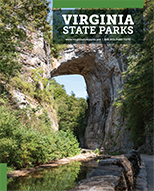Read Our Blogs
Capturing Blue Greatness
The Great Blue Heron is perhaps the best wild bird for beginning outdoor photographers.
This is a very big bird that can fill up the view finder, takes off slower than a songbird, they are here year-round, and allows a person to get closer to it than a Bald Eagle or Kingfisher. As the heron is found along all sorts of bodies of water, especially east of the Fall Line, access to them is very easy.

Great Blue Herons on guard duty
A newer model point-and-shoot camera with 10 mega pixels or more and a zoom above X is good enough to create a heron image. Higher powered zooms are even better. DSLR users can get high quality results with a 75mm to 300mm zoom. Even when using pricey prime lenses, the best zoom you can use are your own two feet. Move as close as you can to the heron without spooking it. And don’t move suddenly either. If the bird doesn't see you as a threat, it will continue about its business.

Be patient and ready when heron are feeding
Shorelines and piers are the best places to find Great Blues as they feed on crabs and fish. Avoid “bating” birds so that you can photograph them eating. Patient stalking produces better images. If you have located a breeding colony of them (known as a “herony” rather than a rookery), keep your distance. Too much human activity can disturb their normal breeding and parental care patterns.

Stalking the shoreline
With miles of shoreline along the York River and Taskinas Creek, York River State Park is an ideal location to capture this blue greatness. The small bog across from the Croaker Landing contact station can be just as productive as the pier or boat launch area. The river access (seining beach), Fossil Beach, and Riverview are great places for hikers to find herons. The canoe/kayak launch and the Taskinas Creek Trail are also good. By using a little caution, you can even try your hand at shooting from a boat.

Beauty in flight
Directions to York River State Park: From I-64, take the Croaker Exit 231B. Go north on Route 607 (Croaker Rd.) for one mile, then right on Route 606 (Riverview Rd.) about one and a half miles to the park entrance. Take a left turn into the park.
If you have read the article and have a question, please email nancy.heltman@dcr.virginia.gov.














